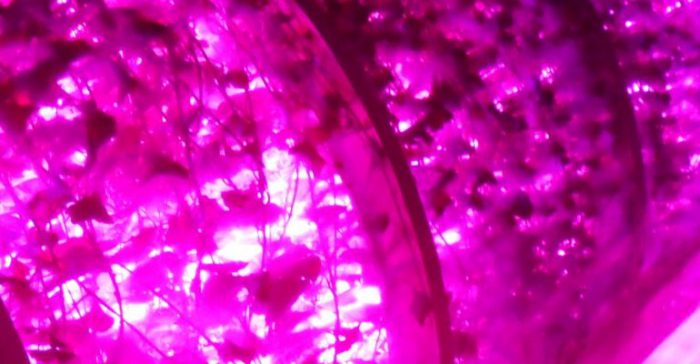Study finds LED lights provide improved energy efficiency and production for growing food crops in space
Phys.Org, March 24, 2016. Image credit: Philips
Philips Lighting has collaborated with The University of Arizona Controlled Environment Agriculture Center (CEAC) to test energy efficient ways to grow food that will help feed astronauts on missions to the moon, Mars and beyond. A recent study, conducted over a nine week period, found that replacing water-cooled high-pressure sodium (HPS) systems with energy efficient LED lighting from Philips in a prototype lunar greenhouse resulted in an increased amount of high-quality edible lettuce while dramatically improving operational efficiency and use of resources. Lettuce grown under Philips LED modules achieved up to 54 grams/kWh of fresh weight, edible lettuce compared to lettuce grown under a high pressure sodium system which achieved only 24 grams/kWh of fresh weight, edible lettuce. This represents an energy savings of 56%.
Philips GreenPower LED toplighting was installed and programmed with a customized “light recipe” developed by plant specialists at Philips to optimize the results. Light recipes are formulated by taking into account a variety of factors including light spectrum, intensity, uniformity and relative position of the lamp to plant canopy. These are combined to develop specific plant characteristics such as compactness, color intensity and branch development.
In addition, the LED modules, which create less concentrated heat loads than HPS lamps, even without water cooling, can be placed closer to the plants resulting in uniform light distribution throughout the greenhouse. This ensures all plants receive the same level and quality of light resulting in better, more uniform plant quality and a more predictable yield. The Philips LED systems also cool independently, which means no additional investment is required in cooling water distribution.
